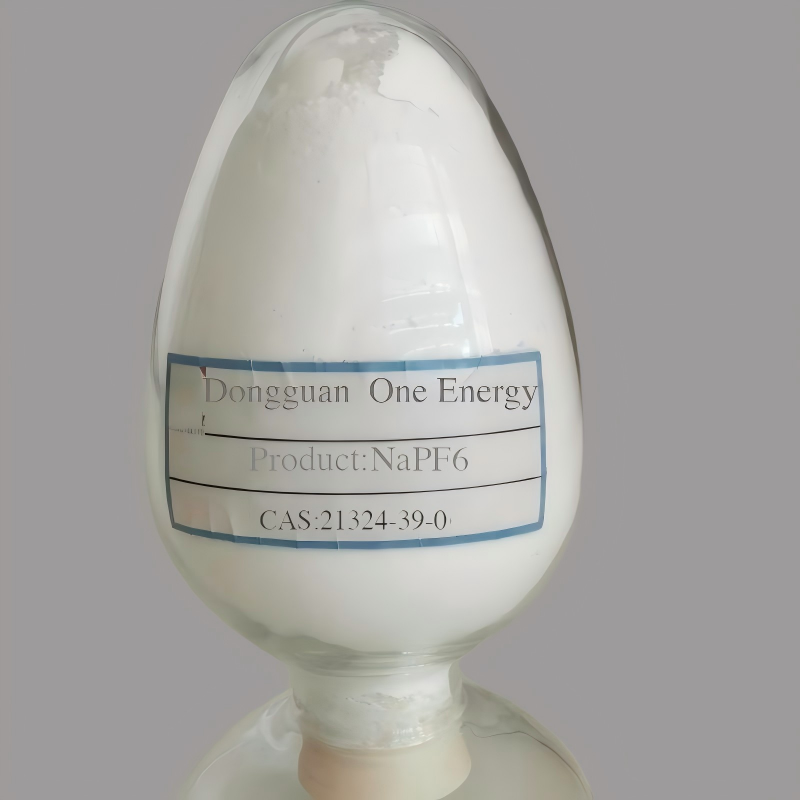
As sodium-ion batteries (SIBs) gain traction as a cost-effective alternative to lithium-ion, the choice of electrolyte salt becomes critical. Two leading candidates—sodium hexafluorophosphate (NaPF6) and sodium bis(fluorosulfonyl)imide (NaFSI)—offer distinct trade-offs in conductivity, stability, and cost.
This article compares NaPF6 and NaFSI for SIB applications, helping you select the optimal salt for your battery design.
(Hook: Start with a pain point + promise a solution.)
1. Chemical Stability & Moisture Sensitivity
| Property | NaPF6 | NaFSI |
|---|---|---|
| Hydrolytic Stability | Moderate (requires dry handling) | Poor (prone to decomposition) |
| HF Generation Risk | Low (if purity ≥99.9%) | High (forms corrosive HF) |
Key Insight:
NaPF6 is less hygroscopic than NaFSI, making it easier to handle in industrial environments. NaFSI’s tendency to degrade into HF can accelerate cell corrosion, especially in aqueous electrolytes.
(Use tables for quick scannability + bold key takeaways.)
2. Electrochemical Performance
Ionic Conductivity
-
NaPF6: Achieves ~8–10 mS/cm in carbonate-based electrolytes (e.g., EC:DMC).
-
NaFSI: Higher conductivity (~12–15 mS/cm) but suffers from anode passivation issues.
Voltage Stability
-
NaPF6 maintains stability up to 4.5V vs. Na⁺/Na, ideal for high-voltage cathodes (e.g., Naₓ[FeMn]O₂).
-
NaFSI degrades above 4.0V, limiting its use in energy-dense SIBs.
Verdict: NaPF6 offers better high-voltage compatibility, while NaFSI may require additives to mitigate side reactions.
(Highlight technical differentiators with data ranges.)
3. Cost & Scalability
-
NaPF6: ~$50–80/kg (bulk pricing), widely available due to legacy LiPF6 production infrastructure.
-
NaFSI: ~$100–150/kg, with synthesis complexity driving costs up.
Procurement Tip: For large-scale SIB manufacturing, NaPF6 provides a lower TCO (total cost of ownership).
(Appeal to commercial buyers with cost benchmarks.)
4. The Bottom Line: When to Choose NaPF6
✔ Preferred for:
-
Industrial-scale SIB production (cost efficiency).
-
High-voltage cathode chemistries (>4.0V).
-
Non-aqueous electrolytes requiring long-term stability.
✖ Consider NaFSI for:
-
Low-temperature applications (better solubility).
-
Prototyping with Na-metal anodes (with passivation coatings).
Explore Our High-Purity NaPF6
For researchers and manufacturers prioritizing stability, scalability, and performance, our battery-grade NaPF6 (99.9%, ≤50ppm H₂O) is rigorously tested for sodium-ion electrolytes.
[➔ Request a Quote or Technical Datasheet]
